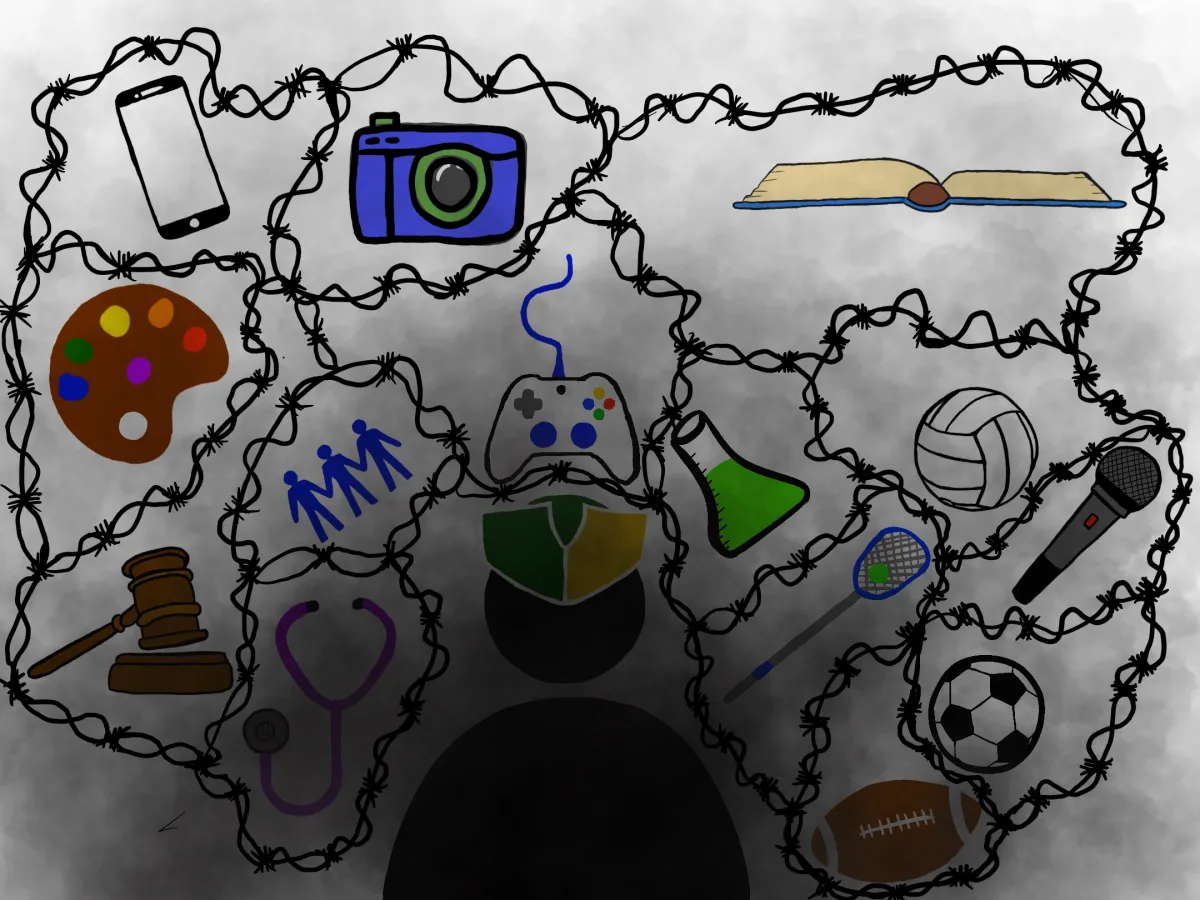As you open your third executive board (e-board) rejection email, you begin to feel inadequate compared to your peers, who are all on e-board for their respective clubs. You begin to wonder if you should continue to attend the club you’ve put so much work into, or stop attending since you don’t want to be a general member with your friends the same age leading your group, leaving you with underclassmen who are already in cliques with their friends.
Statesman believes that there is a lack of community within the walls of Stevenson, including classes, clubs, friend groups, and sports. Students tend to gravitate towards people in the same classes, or those with similar priorities, interests, extracurriculars, and more.
Having similar courses or interests in common, it’s easier to create conversation and build friendships or a community since there’s a distinct similarity between them. This creates a disconnect in Stevenson’s culture.
Statesman believes Stevenson portrays itself as a highly thriving community, only highlighting its wins and achievements in various extracurriculars. Especially with a population of well over 4,000 students, this creates a divide within groups at Stevenson, as some kids don’t know where they fit in at their own school.
Many students join clubs or sports as freshmen, intending to become e-board or team captain by their junior or senior year. However, with that competitive nature, a sense of exclusion develops when the desired position isn’t met.
Watching your friends receive those positions without earning one yourself raises the question of whether you belong. You feel invalidated after your three years of hard work during high school. With that, members of these clubs want to have a purpose and feel relevant and in the right place.
Some clubs, such as Student Council, see the divide between grades very prominently. Student Council is such a large group that cliques are expected and extremely common. Students will stick to one group throughout their time in the club, preventing a cohesive community from forming with other members.
Even when leaders take the initiative to shuffle groups, students disregard these directions, and stay with their friends anyway. Not only can this affect life at school, but it can also impact relationships in general.
With Stevenson being such a large school, newer students, especially freshmen, have trouble finding their community. The competitive atmosphere at Stevenson can prevent new students from wanting to venture out of their comfort zone into new friendships. The fear of joining late, not finding a group to be with, or being seen as an outsider all contribute to the lack of community building at Stevenson that worsens due to the lack of interconnectivity between grade levels, backgrounds, classes, and other demographics.
It’s almost the expectation from peers to have a board position in multiple clubs, or half of your schedule include AP courses. So, if you aren’t a student in that position, there is a sense of awkwardness that stems from the student.
While the administration can argue that Stevenson provides activities for all students, such as school dances, sporting events, and various school sponsored events like streetfest and night market, we must understand that there should be more to achieve. Students hosting these events tend to forget to advocate for engagement and participation from other students which we haven’t exactly seen.
Because people usually build relationships amongst the same ethnicity, they categorize themselves into these groups, and they don’t actively try to branch out and connect with others. This happens in classes, clubs, and teams whether we realize it or not and typically impacts minority students at a disproportionate rate as they’re left out of the community.
Stevenson is very big on pushing the “Patriot” community emphasizing commitment to self, others, and learning, however in reality, the patriot symbolism is an inaccurate representation of our school. Stevenson attempts to produce this community and groups people together that only really share a school, and don’t have a connection past that.
They put up this front on social media, or when talking to families, to advertise Stevenson’s strengths, and never mention the areas of growth Stevenson needs to implement. This perception of students is entirely unrepresentative of the reality of being a part of such a large school, where a schoolwide community is much harder to foster, as school spirit is very limited.
However, with this information brought to our attention, we can start rebuilding Stevenson’s culture and community. For students to feel a part of the community, students, especially club leaders should focus more on building connections inside classrooms rather than only advocating so much for clubs. Suggest building connections by starting in a place you spend so much time in, class. For clubs, it’ll be more effective if members of that club take it upon themselves to advocate for a community, by mixing up groups or moving students around so that they are pushed to interact with others, rather than relying on Stevenson to promote that unity.
Community is something that needs to be developed and can only develop after the constant contribution of all members of the community. It’s ultimately up to us and how we take action into our own hands to help build the community at Stevenson that we want and supposedly “already have.” Little steps like talking to someone in your class or club makes all the difference to form a stronger community within the school.


